The best way to reach Petralona is on foot from the east, crossing the ravine that lies between Filopappou Hill and the Pnyx. The path there retraces, in essence, part of the ancient road called Koile, which started from the hill of the Acropolis, crossed the ravine and the settlement of Koile – which flourished between the 5th and 4th century BC – and ended in Piraeus.
A sunny Saturday morning finds me on that path, sharing it with dozens of cyclists, dog walkers, parents with children, and slow-strolling freddo cappuccino sippers. Far in the distance, you can see the sea, while in the foreground emerge the first houses of Ano Petralona, a district that developed on the land that lay above the electric train lines and which, thanks to urban zoning laws and the surviving neoclassical and interwar houses, still feels like an old Athenian neighborhood.
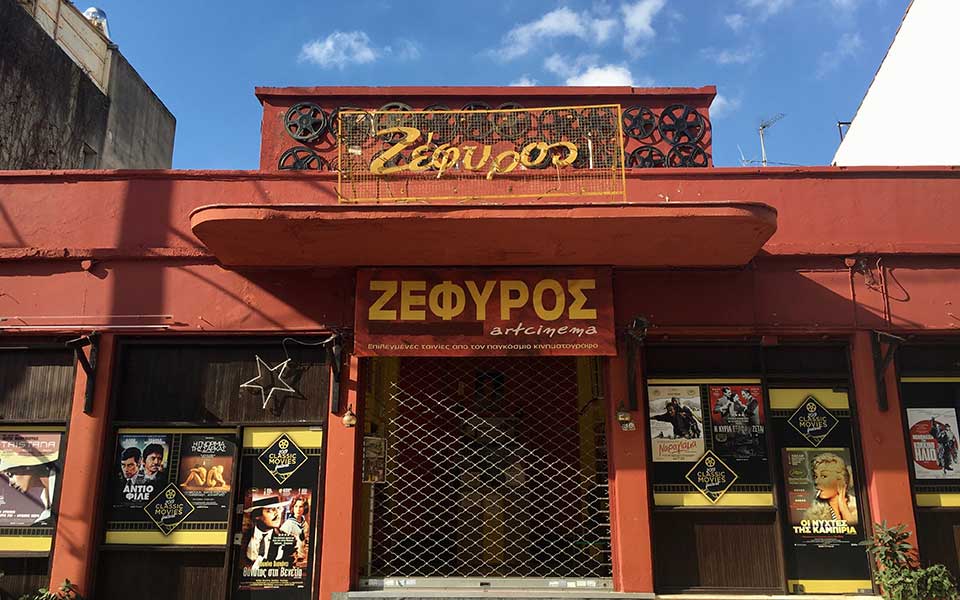
© Maria Coveou
At the foot of the hill, what’s left of the ancient Koile road forks, and one half trickles down into Lakiou Street, which passes under the peripheral road around Filopappou and meets Apolloniou Street, where I turn right. My destination is “Ta Petrina” (“buildings made of stone”), a small section of the neighborhood north of Pallinaion Street, which was first inhabited in the 1920s by refugees of Asia Minor. It owes its name to the stone houses, built as an upgrade for local residents in the 1950s on the initiative of Queen Frederica, which survive to this day.
Cutting down to Kallisthenous Street, I quickly find that the houses have been subjected to great interventions, not necessarily tasteful, by their contemporary owners, so whatever quaintness one expects when hearing the name “Ta Petrina” is absent.
The immediate area, however, does not cease to be a charming neighborhood of special character, thanks in part to the many well-kept courtyards with orange and lemon trees, flower pots and clothes on washing lines, and to the cats, the small alleyways reminiscent of a village, and the sound of folk songs from open windows. And it’s not just the windows that people leave open here; doors, too, stand agape.
Where else in Athens do you come across open doors?
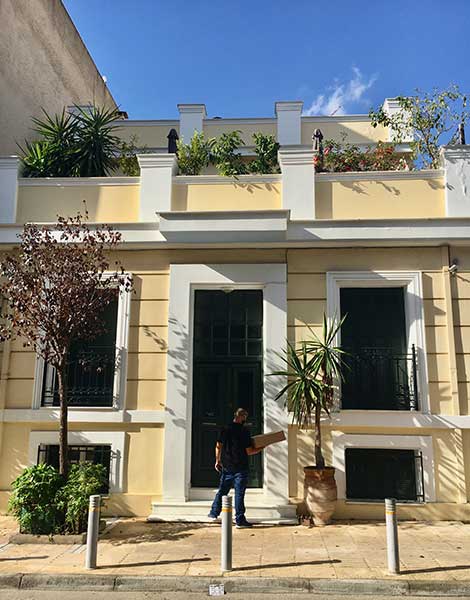
© Maria Coveou
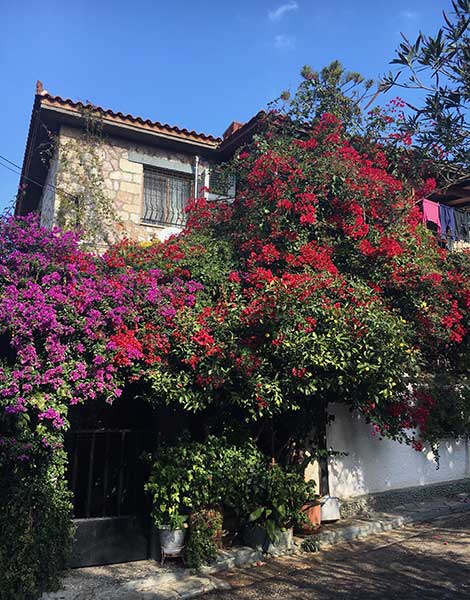
© Maria Coveou
Having wandered for some time in the streets photographing courtyards and balconies, I cross the park at the northern end of the neighborhood to reach Troon Street, which is pedestrianized right up to where it intersects with Timodimou Street and is ideal for a short bicycle ride or a simple stroll; in the evening, the youth from the area gather and sit talking in small, tightly-knit groups.
From Timodimou onward, Troon Street becomes something of a time machine, with each new building transporting you to a different era in the history of the district, from the end of the 19th century right up until today. I stop at number 26 to photograph the most beautiful neoclassical residence of Petralona, a building that has appeared innumerable times in films and commercials.
The summer art-house movie theater Zephyros, which has been operating since 1938 is closed now for the season but looks ready to host a screening at any time. My next stop is at the wonderful interwar residence number 48 (in the basement of which is my favorite Cretan eatery, “Aster”) with its characteristic right-angle balcony at the corner of Troon and Ionon streets.
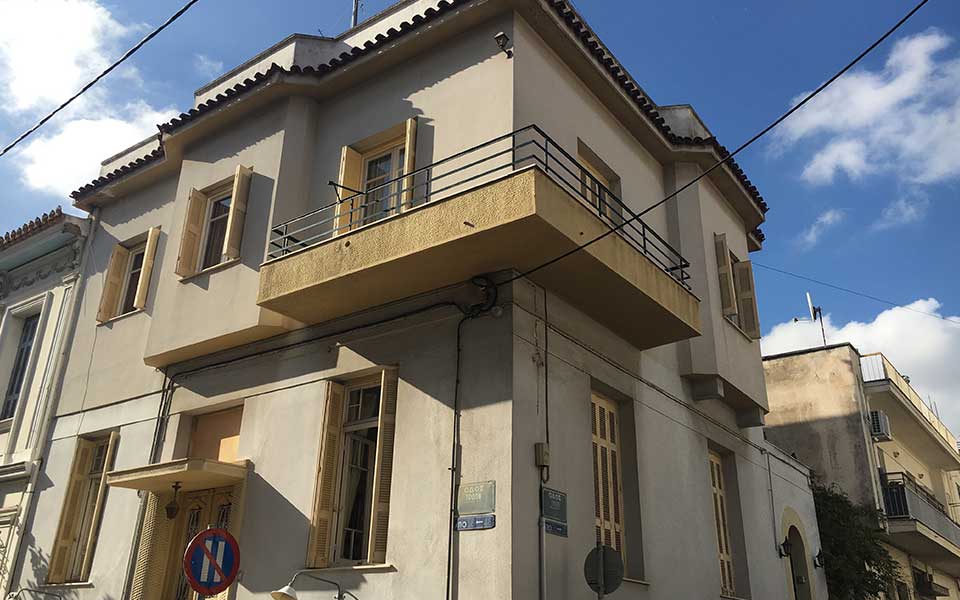
© Maria Coveou
Continuing my walk, I turn left on Ionon and right on Kallisthenous Street to move to the heart of Ano Petralona, little Merkouri Square, a favorite hangout for the locals. I pass by it and head uphill via Gennaiou Kolokotroni and Roumelis streets.
On Gika Street, I come across the small park of Apolloniou, which today is flooded by families with children, and shortly afterwards I get lost in a small labyrinth of sunless narrow streets with strange names (Etherias, Psamathis and Efyras).
Arriving at Aeoleon Street, I head down the central thoroughfare Dimofontos, which is also flanked by architecturally interesting edifices, and end up at the intersection with Kydantidon Street. Here, my interest shifts to gastronomy and I buy delicious take-out Thai food from “Blue Bamboo” – one of the many small restaurants in the area that, under normal conditions, serve to attract Athenians from across the city.
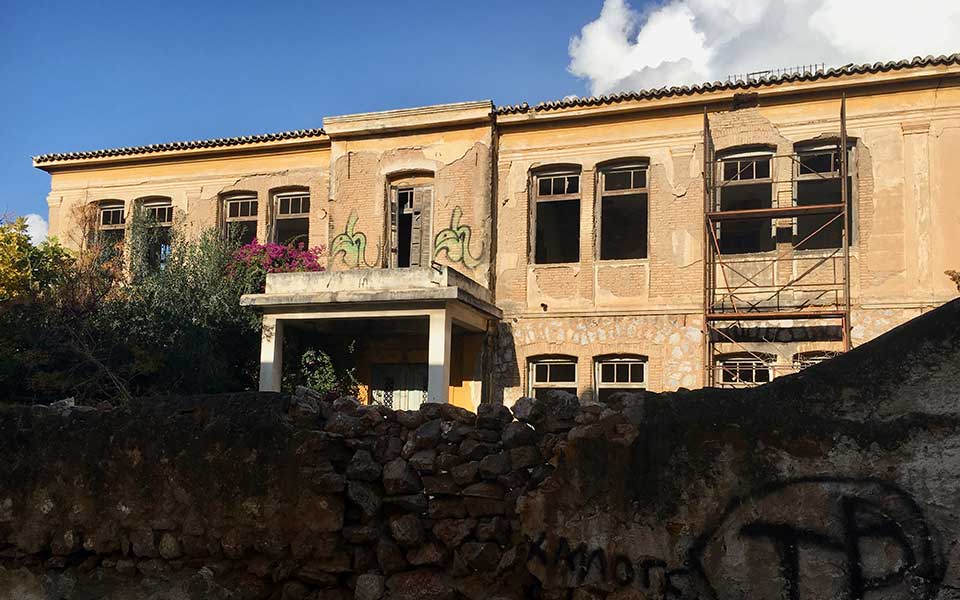
© Maria Coveou
Synoikia to oneiro (“A Neighborhood Named the Dream”)
The hill in the northeast corner of Petralona district, part of which is now occupied by “Ta Petrina,” was originally a quarry. After the influx of refugees following the Greek Army’s defeat in Asia Minor in 1922, more than 800 refugee families from Attaleia and Alasia (present-day Antalya and Alanya respectively) on the Turkish coast turned the rock pit into a makeshift settlement, using any material available (including clay bricks, sheet metal, petrol containers and wooden planks).
The slum became known as either Attaliotika or Asyrmatos (“Wireless”), the latter name due to the radio antenna of the adjacent Naval War School, an institution which occupied a large area between the present-day Troon and the peripheral road around Filopappou Hill.
On December 1944, during the Dekemvriana (armed clashes between the Greek Government, British Army and communist militias) the school buildings were set on fire.
At some time during the next decade, after Queen Frederica had organized a fundraiser, it was decided to erect 150 stone houses in place of the makeshift houses; this time, the materials to be used would be repurposed stone from the old school facilities [source: mikros-romios.gr, Eleftherios G. Skiadas].
Nevertheless, Asyrmatos remained one of the most impoverished districts of Athens, a poverty captured in the 1961 film “Synoikia to Oneiro” (“A Neighborhood Named the Dream”), much of which was shot on today’s Hyperionos Street.
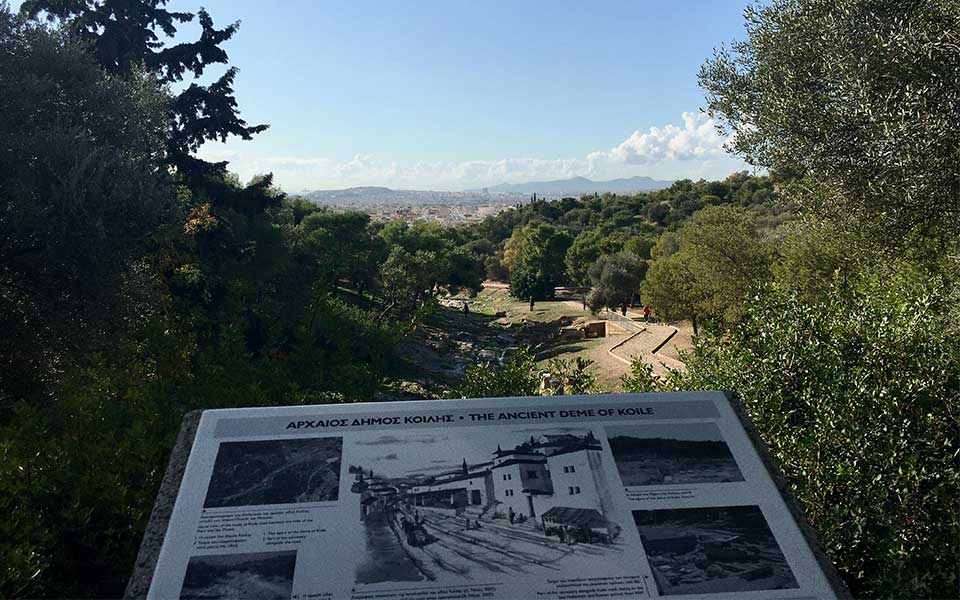
© Maria Coveou
Directed by Alekos Alexandrakis, who also starred in it, and featuring his then-wife Aliki Georgoulis (who also produced) alongside Manos Katrakis and the inhabitants of the district themselves as extras, this film could have become a great example of Greek neo-realism. Instead, it was censored by the government for “discrediting the image of prosperous Greece” and was eventually released in an edited version that did not reflect the vision of its creator, and with the “offending” scenes of poverty cut out entirely.
One thing that did escape censorship was the haunting song “Vrehei sti ftohogeitonia” (“It rains in the poor neighborhood”), with lyrics by the poet Tasos Livaditis and music by Mikis Theodorakis; performed by Grigoris Bithikotsis for the film.
The song went on to become poverty’s unofficial “anthem” in Greece.
This article was first published in Greek on www.kathimerini.gr












